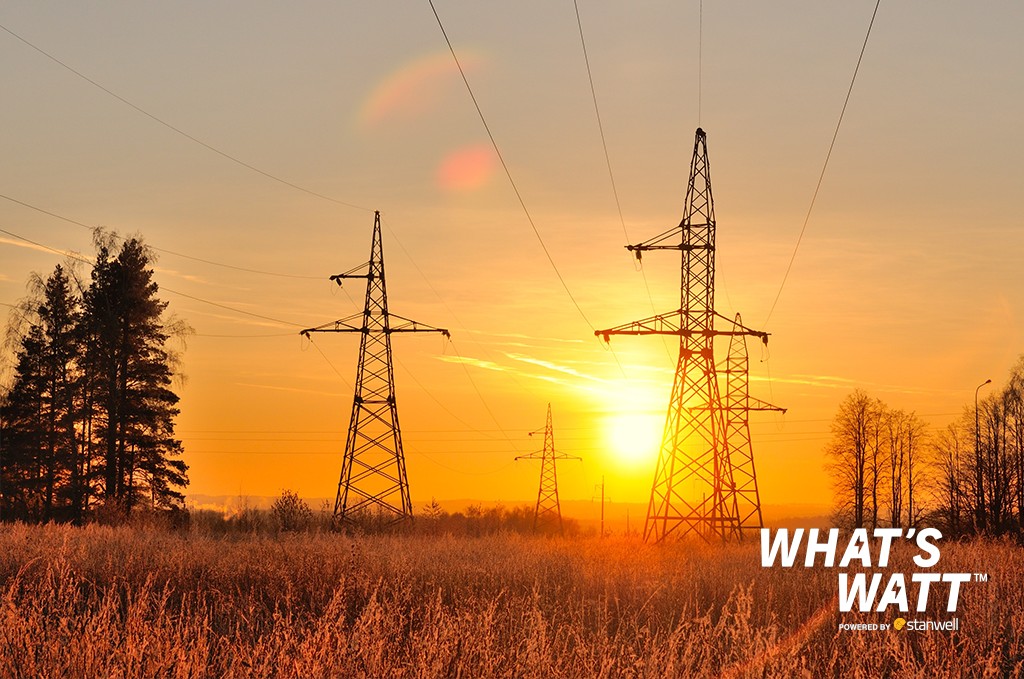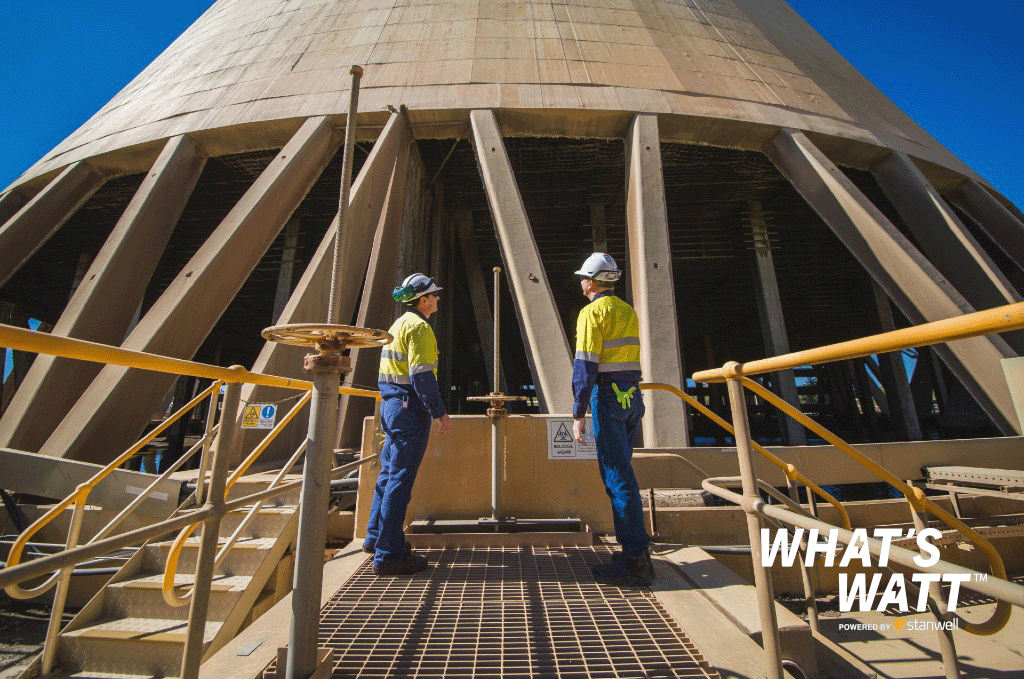Did you know about 10 per cent of the electricity that leaves Australian power stations never makes it to a consumer? Here’s what causes transmission loss – and what’s being done to address the problem.
What is transmission loss?
Power stations – conventional and renewable alike – are usually located in remote or regional areas. That means the energy they generate often flows across great distances, through a vast network of utility poles and power lines, to reach you at home.
But when electricity travels this way, it doesn’t always make it to its intended destination. Instead, some of it is lost in the form of heat. That’s because no matter how efficient of a conductor a power line is, electrons will collide with other electrons, atoms and material in the line as they move through it. These collisions cause electrical resistance and generate heat.
That might sound a bit abstract, but you can actually see these losses in the form of sagging power lines. Of course, some of that sagging is just due to gravity – who knew power lines were so relatable? – but the rest is due to heat that causes the lines to expand and sag over time. Some of this heat comes from lost electricity.
According to the Australian Energy Market Operator (AEMO), about 10 per cent of the electricity that leaves an Australian power station never makes it to a consumer.
Transmission loss affects consumers, in the long run, because the more energy that’s lost in transmission, the more AEMO has to purchase from generators to meet demand, potentially driving up the spot price of electricity.
The amount of power that’s lost in transmission depends on three key factors:
- The distance of the generator from customers. The further the power has to travel, the more is lost.
- The voltage and resistance of the transmission line.
- The amount of power flowing through the line.
Current is power divided by voltage. So, for instance, if you halve the voltage of the line, but keep the power flow the same, you’ll double the current.
The loss is then calculated by squaring the current – so by halving the voltage of the line, you now have four times the losses over the same distance.
Transmission lines operate at a high voltage to reduce these losses.
How does the rise of renewables impact transmission loss?
Australia’s energy system is transforming, with new wind and solar generators connecting to the grid at a rapid rate. But in a country as vast as Australia, this presents a problem.
Many of the new large-scale generators are located in sunny or windy areas at the edges of the electricity grid. While that’s ideal for generating solar and wind power, it means the power has to travel further to reach customers.
These remote locations are often serviced by relatively weak transmission lines with lower voltage, leading to higher currents and higher losses.
More generators trying to transport more electricity through the lines also lead to more congestion. In much the same way that too many cars trying to travel on the same road at the same time leads to traffic jams, too many electrons converging on the same path leads to grid congestion – which, in this case, means more electrons colliding, more heat, and more transmission losses.
What can be done to reduce transmission loss?
On a day-to-day basis, steps taken to mitigate transmission loss can include curtailing generators’ output to reduce the amount of electrons colliding on the line, particularly on summer days when ambient conditions are hotter to begin with.
Another way transmission loss is addressed in the short-term is ‘line washing’ – literally spraying water from a helicopter to remove dust and other material from power lines and reduce the amount of heat on the line.
In the long term, however, significant investment in infrastructure is needed to future-proof the grid and reduce transmission loss as the generation mix shifts towards renewable energy.
AEMO’s Integrated System Plan (ISP), a whole-of-system roadmap for the development of Australia’s electricity sector over the next three decades, advocates for renewable energy zones (REZs).
These are regional hubs that connect multiple renewable generators and grid-scale storage technologies (such as batteries) in the same location, and pair them with high-voltage poles and wires, so that renewable energy can efficiently reach the homes and businesses that need it with minimal transmission loss.
REZs unlock areas of high investor interest, streamline the development of new projects, and help to foster jobs and growth in the regional economies where they’re located.
The Queensland, New South Wales and Victorian governments have all committed to developing REZs. New South Wales formally declared the Central-West Orana Zone, centered around Dubbo, as Australia’s first dedicated REZ in November 2021; it will host at least 3 GW of solar, wind and storage capacity.
In Queensland, $145 million in funding has been allocated to establish three Queensland Renewable Energy Zones (QREZs) in northern, central and southern Queensland.

The Queensland Government has also released the Queensland Energy and Jobs Plan, which outlines plans for Queensland’s transmission network to evolve as the electricity system becomes increasingly decentralised.
Under the Queensland Energy and Jobs Plan, the Queensland SuperGrid will transport renewable energy around the state when and where it’s needed. The SuperGrid includes all elements of the electricity system, including transmission, solar, wind, dispatchable capacity and storage.
This includes four new high-voltage backbone transmission projects that will be constructed by the mid-2030s, connecting the state’s proposed pumped hydro storage assets and areas of strong renewable resources with Queensland’s demand centres.
Queensland’s high-voltage backbone transmission projects include:
- Two transmission connections, totalling 140km, connecting Borumba to the grid in southern Queensland.
- A 290km line to move more energy between southern and central Queensland.
- A 750km line connecting central Queensland to a pumped hydro facility and renewable energy in north Queensland.
- A 370km line to connect Townsville to Hughenden. This connection may be extended to the North West Minerals Province.
In total, it’s expected that $62 billion will be invested into the Queensland SuperGrid between 2022 and 2035, which will make it possible for 80 per cent of the state’s power to come from renewable sources by 2035.

Ultimately, connecting renewable energy with more efficient transmission lines will ensure that more power can get where it’s supposed to go – and that’s good news for generators and consumers alike.
Learn more about the Queensland Energy and Jobs Plan here.



